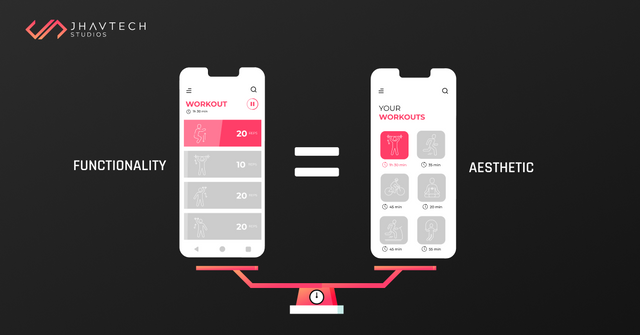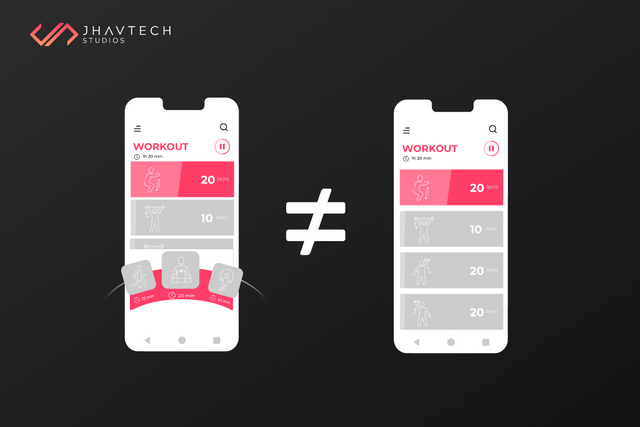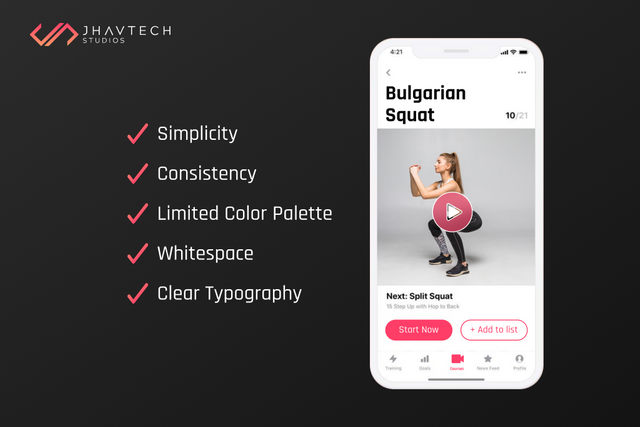Crafting the Perfect App: Balancing Functionality and Aesthetics

Picture this: You’re sitting in the corner of your favorite cafe, breathing in the aroma of freshly brewed coffee while brainstorming ideas for the next great app. It’s an exciting time filled with endless possibilities, but amid the excitement you realize that building an app isn’t just about coding—it’s about designing an experience that seamlessly blends functionality and aesthetics.
Functionality and aesthetics are two dynamic app elements, working hand in hand to attract users and keep them coming back for more. But finding the right balance between the two can be a daunting task. No worries, for we are about to embark on a journey to reveal the secrets to creating that perfect balance.
Functionality vs. Aesthetics: What the Data Shows
Before we get into the nuances of app development, let’s take a moment to understand why it’s important to balance functionality and aesthetics. According to a survey conducted by Clutch, 94% of smartphone users commented on the ease of use when deciding whether to continue using the app emphasizing user retention and driving participation.
But in today’s visual world, functionality alone isn’t enough to drive user success. Moreover, functionality over form simply doesn’t necessarily hold true. Google research showed that 75% of users judge a company’s trustworthiness based on its website design. While this data applies primarily to websites, the same principle applies to mobile apps—design and aesthetics play a major role in users' perceptions of the quality and reliability of the app.
Difference between Functionality and Aesthetics in App Development
In app development, functionality and aesthetics play distinct but complementary roles in shaping the user experience. Functionality refers to the core features and capabilities of an application, including the ability to perform tasks efficiently and effectively. This includes things like speed, responsiveness, reliability, and overall user interface design.
On the other hand, aesthetics is about the visual appeal and design elements of an app, including aspects such as layout, color scheme, text, and graphic elements.
Balancing both aspects is essential to creating a successful application that not only satisfies users’ practical needs but also captures them visually, increasing their satisfaction. Ultimately, exploring the interplay between functionality and aesthetics to provide a compelling and user-friendly experience is important in app development.

Strategic Management: Tips for Finding the Right Balance
Now that we’ve established the importance of balancing functionality and aesthetics, let’s explore some ways to work towards achieving this delicate balance:
Know Your Audience
Understanding your target audience is of the utmost importance to build a compelling app for users. Conduct market research and gather insights to tailor your app's functionality and design to the specific needs and preferences of your target audience. By knowing your audience from the inside, you can create an app that speaks directly to their wants and desires.
Here are some important points to consider:
1. Demographics: This provides important information about your audience, such as age, gender, location and income. This data allows you to better segment audiences, allowing you to tailor your app’s functionality and design to suit specific demographic segments.
2. Gathering Insights: Qualitative insights from direct interaction with users provide valuable inputs into their needs and preferences. Conducting surveys, interviews, and usability tests helps gather information and measure user sentiment throughout the development process, ensuring that your app is up to par with user expectations.
3. Create an Exceptional User Experience: Develop a deep understanding of your app's audience and serve their needs directly. Prioritize intuitive interactions, personalized features, and content recommendations to foster meaningful engagement and build a loyal user base.
Prioritize Usability
Usability should be at the forefront of your app development efforts. Invest in easy navigation, clear layouts, and easy-to-use features to ensure that users can easily navigate and interact with your app. According to a Forrester Research study, every dollar invested in a UX program yields up to $100 in returns, underscoring the significant impact utility has on a company’s bottom line.
Focus on Performance
If your app is slow, a beautiful design won't mean much. Efficiency is key to a seamless user experience. The research conducted by Akamai sheds light on the importance of efficiency to retain users. The findings show that 53% of mobile users are willing to abandon a website if it takes more than three seconds to load. This figure highlights today’s impatient consumers and highlights the importance of fast and seamless experiences in a digital environment.
As an app developer, it’s important to translate this theory into action during the development process. Prioritizing performance alongside aesthetic considerations ensures that your app delivers an overall user experience that is tailored to your audience.
Embrace Minimalism
In an age of information overload, simplicity reigns supreme. Minimalism in app design isn’t just a passing fad; It is a response to the increasing complexity of the digital world. It’s about cutting through the noise and delivering a clean, focused experience that allows users to do their jobs more effectively.
Minimalism in UI/UX design is not a trend; It is a response to the increasing complexity of the digital world. It’s also about cutting through the noise and delivering a clean, focused user experience. But here's the million-dollar question: How can we make sure that it no longer steals the core features and functionality of the app?
Beauty is in simplicity. The appeal of minimalist design is its beauty and simplicity. By eliminating unnecessary features, we keep the user focused on the task at hand. In a small app layout, each color, shape, and font serve a purpose, reduces mental load, and makes the app not only visually appealing but also understandable and easily navigable.
Function as a basis. While aesthetics is important, function is the foundation we build on. An app can have a stunning interface, but if users can’t figure out how to use it quickly, they’ll delete it as quickly as they downloaded it. Research by Nielsen Norman Group found that users prefer simple, familiar content that doesn’t require much cognitive effort to get to. By prioritizing resources without cluttering your app interface, you can increase usability and create a pleasant user experience.

Leverage Visual Hierarchy
Visual hierarchy plays a crucial role in guiding users' attention and prioritizing content. Use techniques such as color contrast, texture, and spatial design to create a clear visual design that directs users’ attention to key features and actions. Missouri University of Science and Technology research found that visual design gains attention significantly, influencing user reliability and usability of the website, and emphasizing its importance in app design.
Test, Test, Test
In the world of app development, testing is your best friend. Test your app carefully on different devices, screen sizes, and operating systems to make sure it is compatible and works. If you want your app to be accessible to all users, regardless of disability, don't forget to test it out. By conducting rigorous testing, you can identify and address any issues before reaching out to users, ensuring a smooth and seamless experience.
Final Thoughts…
In the fast-paced world of app development - be it mobile, desktop, or web application development - finding the right balance between functionality and aesthetics is key to creating an app that engages users and keeps them coming back for more. By understanding your audience, prioritizing usability, focusing on functionality, embracing minimalism, using visual design, and thorough testing, you can build an app that stands out from the crowd while providing a unique user experience.
So, go ahead and start your app development journey armed with these insights and strategies. With the right blend of form and function, you’ll be well on your way to creating masterpieces that delight users and leave a lasting impression.